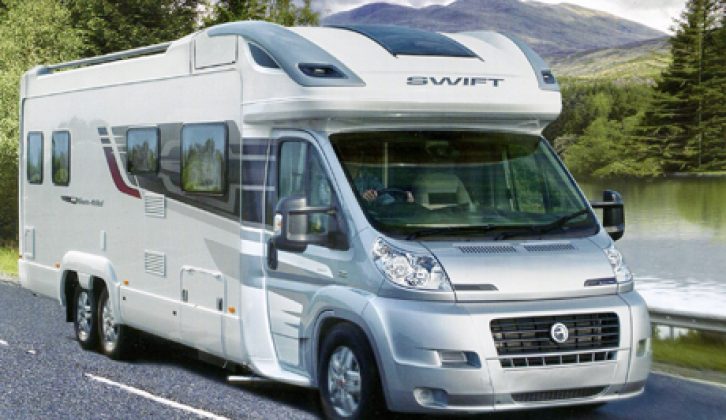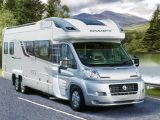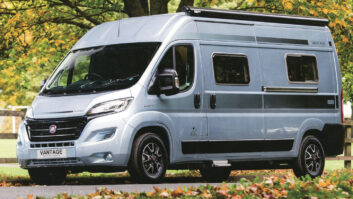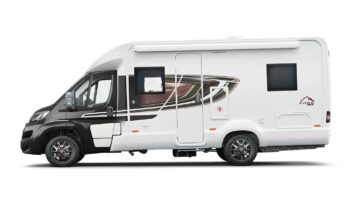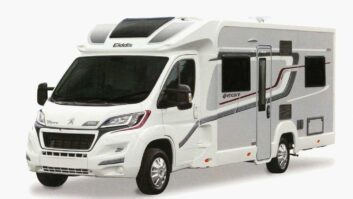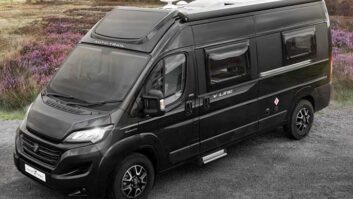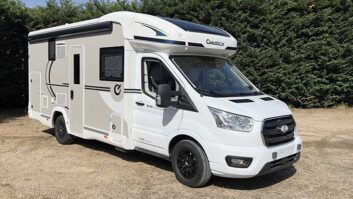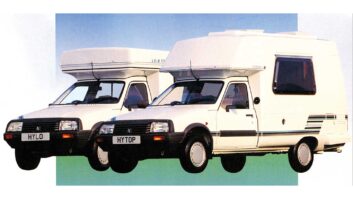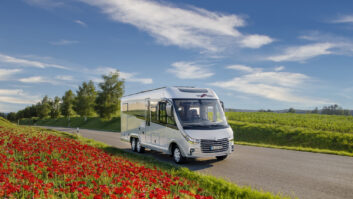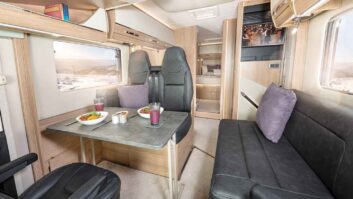Named after the raft on which Thor Heyerdahl crossed the Pacific Ocean, Swift’s Kon-Tiki has been in continuous production since 1985. It’s not an exaggeration to say that it’s a motorcaravanning icon.
Here we look at which is the best Swift Kon-Tiki to buy, what to pay and what problems to look out for – it’s the next best thing to taking an expert with you when you’re viewing used motorhomes for sale. Happy motorhome bargain-hunting!
Many think that the tandem-axle (six-wheel) Kon-Tikis were first unveiled alongside the launch of the X250 Ducato for the 1997 model year, but Swift actually made Kon-Tikis with ‘six appeal’ as long ago as 1991. All Kon-Tikis were built on the single-axle chassis from 1995 to 2006, when it became clear that the Cottingham Crew required something to square-up to Auto-Trail’s Frontier range.
The first current-generation models were the Kon-Tiki 669 – with an island bed – and the Kon-Tiki 679, which had a transverse garage bed. Later, the Kon-Tiki 649 appeared – it had a double Pullman-style front dinette and two long sofas at the rear – as well as the Kon-Tiki 659. The latter had a fixed corner double bed, ahead of a full-width rear changing room featuring a walk-in shower cubicle and toilet.
Our photographs show the Swift Kon-Tiki 669, which was one of the first current-generation models; it features a comfortable island bed. The Kon-Tiki’s exterior is now more modern, but the original trademark high quality remains.
If you’re looking for cheap motorhomes, it’s worth looking at just how much more you get for your money if you buy used motorhomes instead of brand new ones.
Essential facts and figures
Swift Kon-Tiki is built on a Fiat Ducato heavy chassis with Al-Ko extensions. It has been built in Cottingham, in the UK, from 2007 to the present day (2014 and counting). It comes as an overcab or low-profile coachbuilt motorhome. The Kon-Tiki’s overall length (on 2010 models) is 8.67m (28’5”).
Tips to help you buy better
There were some issues regarding water ingress into the engine bay when this series of Ducato was launched, so we advise you to check early examples to ensure that rain covers have been retrofitted to the engine. The (Iveco-derived) three-litre engine is an absolute stonker, providing effortless cruising and plenty of grunt when required. As always, check for a full service history when buying a used motorhome.
The only problem to occur with any commonality is an EGR (exhaust gas recirculation) valve failure; this is indicated by the constant illumination of the engine-management light.
The conversion work is by and large pretty good, although some have criticised the make-up of the double-bed from the lounge seats (where fitted). As with any used coachbuilt, we’d be more concerned about seeing a habitation-service record and the results of a recent damp test.
Our expert verdict
So, what do we like about these ‘vans? They look the part, they’re rock-steady on the road, they come with UK-friendly design and equipment and, on the whole, they’re mostly very well specced. Any dislikes? Well, Alde heating would be preferable (it was fitted from 2014), while the large turning circle isn’t too handy.
Our pick? For full-timing or long-term motorcaravanning, we’d recommend the Kon-Tiki 669. For the safe transport of scooters and the like, go for the Kon-Tiki 679.
What should you pay? You should find a 2008 Kon-Tiki 669 from £34,500 as a private sale, or £38,500 if you’re buying from a motorhome dealer.
Still not sure? Perhaps you’d like to consider a Bessacarr E700 series (2007- 2012), or an Auto-Trail Arapaho/Chieftain (1996-present).
And we’ve more used motorhome buying advice right here. Get the low-down on buying a 1987-1984 Swift Kon-Tiki 640, a 1996-2006 Auto-Trail Arapaho/Chieftain and also a 2008 Bessacarr E789 garage model. We’ve also got a preview of the 2015 Swift Kon-Tiki range.
They look the part and are rock-steady on the road
